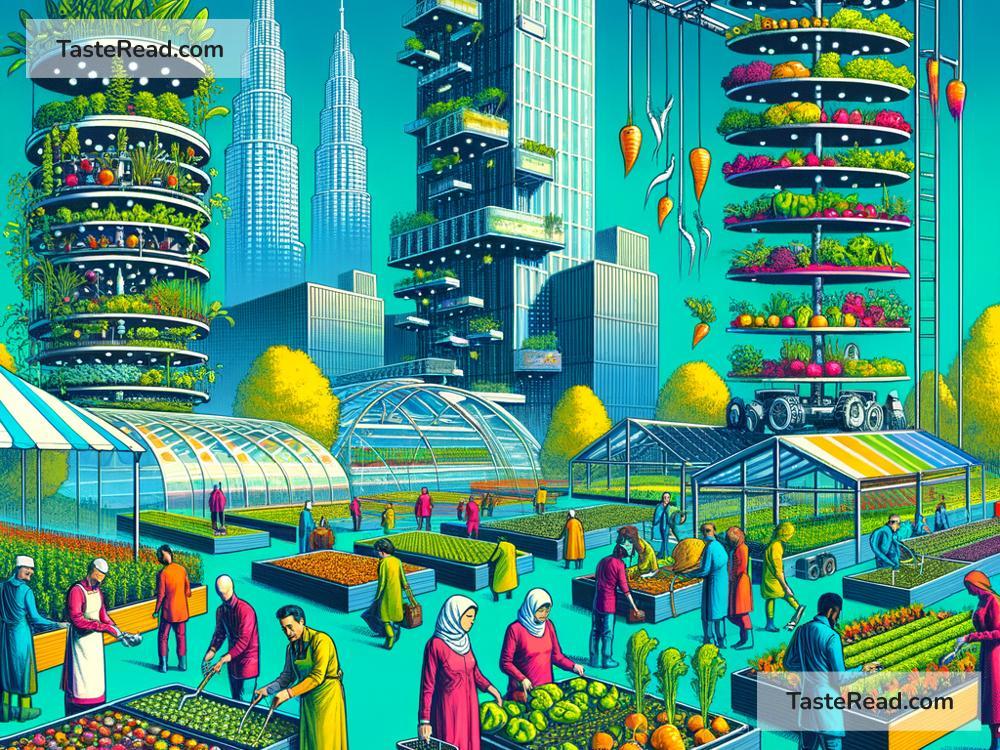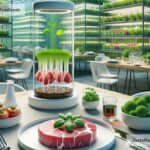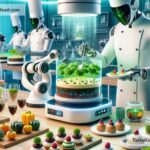The Future of Food and the Power of Systemic Transformation
Food is a vital part of our lives, connecting us to nature, community, and culture. But the way we produce, consume, and distribute food has many challenges today. Issues like climate change, resource scarcity, health problems, and inequality are becoming more visible, showing that our current food systems aren’t sustainable for the long run. Something needs to change—and that change must be big. This is where systemic transformation comes in. It means rethinking and redesigning the entire food system for a healthier, fairer, and more sustainable future.
What is the Food System?
When we talk about the “food system,” we don’t just mean farms and grocery stores. The food system includes everything involved in growing, processing, transporting, selling, and consuming food. It also includes all the people, technologies, and policies that make this system work. For example, the farmer growing tomatoes, the factory making ketchup, the truck driver delivering food to stores, and you cooking a meal at home—all of these are connected parts of the food system.
Unfortunately, modern food systems often harm the environment and people, especially those who are most vulnerable. Industrial farming practices create pollution and degrade soil. Millions of metric tons of food are wasted each year, even as millions of people go hungry. Unhealthy processed foods have contributed to rising rates of obesity and chronic diseases worldwide. It’s clear that we need a better way.
What is Systemic Transformation?
Systemic transformation means changing how the entire food system works, not just fixing small problems. It’s a shift in the “big picture.” Instead of patching existing issues one by one, it focuses on creating a completely new way to produce, distribute, and enjoy food. This approach requires innovation, collaboration, and a long-term vision.
Think of the food system like a tree. If the tree is unhealthy, you can’t just trim a few branches and expect it to thrive. You need to dig deep to inspect the roots, water the soil, and perhaps even replace the old tree with stronger seeds. In the same way, systemic transformation looks at the deeper causes of problems and creates bold solutions to rebuild the food system from the ground up.
The Role of Technology
Technology will play a big role in shaping the future of food. For example, innovative farming methods like vertical farming and precision agriculture can reduce land and water use while increasing food production. Vertical farming allows crops to grow indoors in stacked layers, which means we can grow food in cities or areas with harsh climates. Precision agriculture uses sensors, drones, and data to help farmers use resources like water and fertilizer more efficiently.
Another exciting area is lab-grown or “cultured” meat. Scientists can now produce meat without raising animals by growing cells in a lab. This process could reduce greenhouse gas emissions, land use, and animal suffering. Other food innovations, like plant-based proteins, edible algae, and 3D-printed meals, are emerging as creative solutions to meet global food needs.
Supporting Sustainable Practices
A transformed food system must prioritize sustainability. This means shifting away from practices that harm the planet toward those that protect it. Sustainable farming, for example, focuses on using natural methods to grow food while preserving soil health and biodiversity. Organic farming and agroecology—an approach that combines ecological science and traditional farming knowledge—are valuable tools.
Another key part of sustainable food systems is reducing waste. Currently, about one-third of all food produced globally is wasted, which has social, economic, and environmental costs. Businesses and individuals can adopt simple practices like better storage, donation programs, and composting to minimize waste and maximize resources.
Making Food Fair and Equitable
Systemic transformation also addresses social and economic inequalities in the food system. Today, millions of farmers, especially small-scale farmers in developing countries, struggle to make a living wage. They often lack access to education, technology, and fair markets. A truly sustainable food future empowers these farmers with better livelihoods and opportunities.
Improving access to healthy food is another vital goal. In many places, nutritious food is expensive, while unhealthy processed food is cheap. Governments, businesses, and communities can work together to make nutritious food affordable and accessible for everyone, regardless of income level.
What Can You Do?
You might be wondering, “What can I do to help reshape the future of food?” The truth is, even small actions can make a difference. Here are a few ideas:
- Eat sustainably: Choose local, seasonal, and plant-based foods that have a smaller environmental footprint.
- Reduce food waste: Be mindful of how much food you buy, cook, and throw away.
- Support fair practices: Look for food products that are certified as fair trade or sustainably produced.
- Advocate for change: Speak up about food issues in your community. Support policies that promote healthy, fair, and sustainable food systems.
Looking Forward
Creating a thriving food system is not just about feeding people today—it’s about protecting the planet and ensuring food security for generations to come. Systemic transformation gives us the opportunity to tackle the root causes of hunger, inequality, and environmental damage with bold and creative solutions.
While this transformation won’t happen overnight, progress is already underway. Governments, businesses, scientists, farmers, and consumers all have a role to play in shaping the future of food. By working together and embracing innovation, we can create a system that nourishes not only our bodies but also our communities and the planet. Let’s make this vision a reality—one meal at a time.


